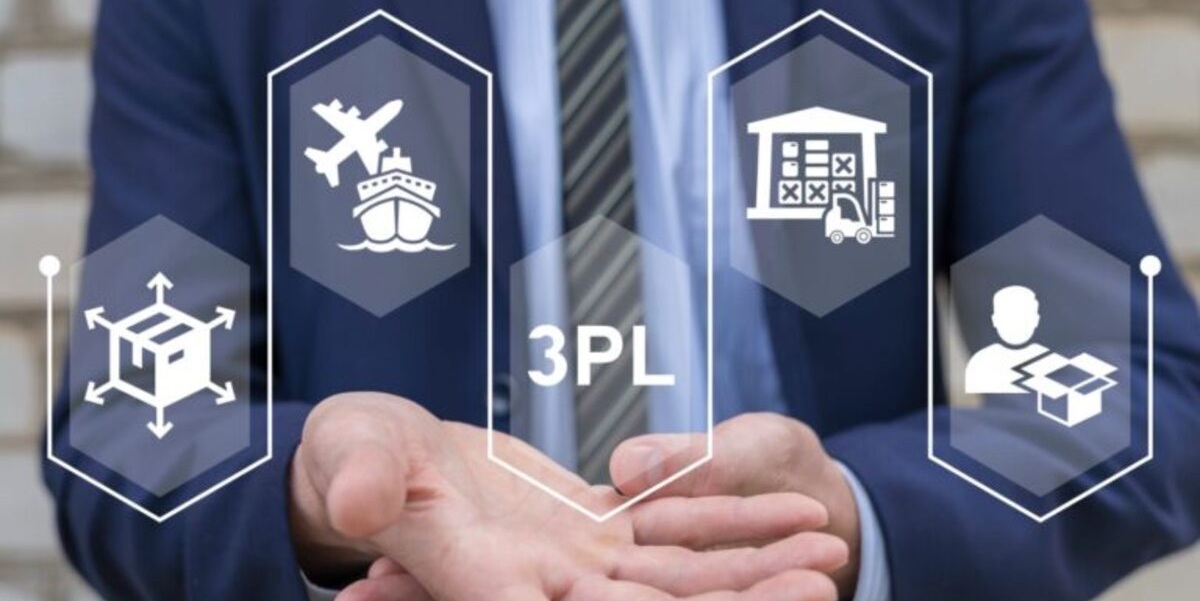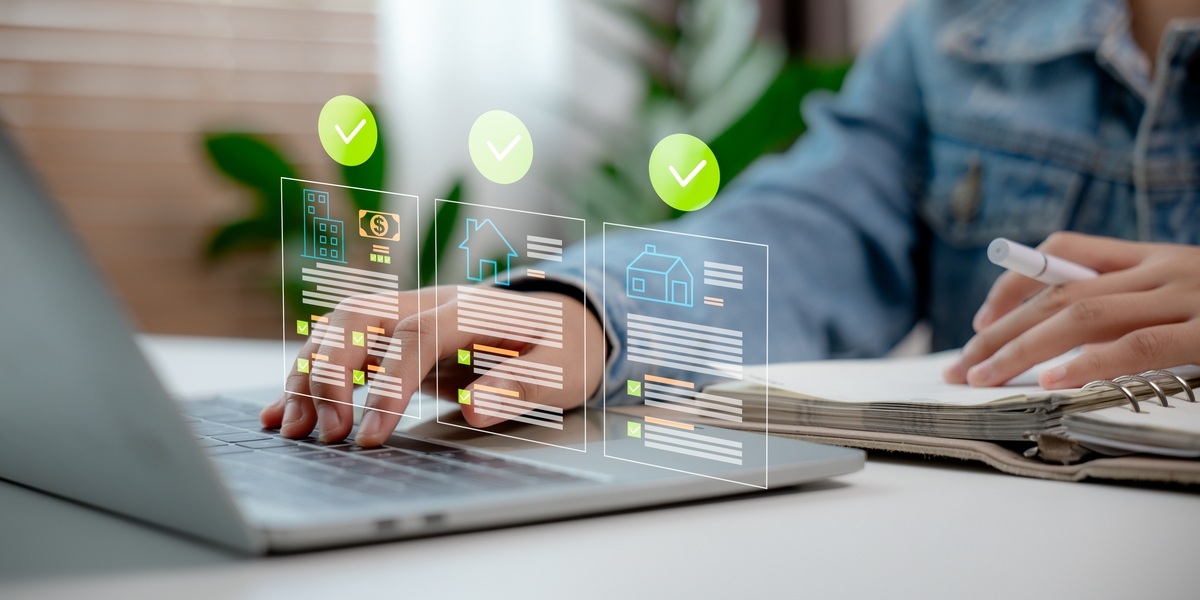Ever wonder how your new phone case or sneakers show up at your door just days after clicking “buy”? It’s not magic — it’s logistics. And behind most smooth, on-time deliveries, there’s something called a 3PL.
In today’s fulfillment-driven world, logistics has gone from being a back-office task to a make-or-break factor for businesses. With customers expecting fast, affordable, and trackable deliveries, many companies have reached a point where doing it all in-house just isn’t practical anymore.
That’s where 3PL, or third-party logistics, comes in.
Table of Contents
What Is 3PL?
Let’s start with the basics: What does 3PL mean?
3PL stands for Third-Party Logistics. It refers to outsourcing logistics operations like storage, order fulfillment, and shipping to a specialized partner. Rather than handling everything internally, businesses partner with logistics providers who have the space, tools, systems, and staff to handle the heavy lifting.
What kind of services are we talking about?
At a minimum, most 3PL logistics providers offer:
- Warehousing and storage
- Inventory management
- Pick and pack fulfillment
- Shipping coordination (with multiple carriers)
- Returns processing
More advanced providers might offer value-added services like kitting, custom packaging, cross-docking, and integration with your ecommerce platforms.
Is there a difference between 1PL, 2PL, and 3PL?
Yes:
- 1PL (First-Party Logistics) is when you manage everything in-house. You own the products, store them in your own facility, and ship them directly to customers using your own resources. Think of a local bakery delivering its own goods in a company van. You’re handling the full logistics process yourself.
- 2PL (Second-Party Logistics) involves outsourcing the transportation part. You still manage inventory and packing, but hire a carrier—like FedEx, UPS, or DHL—to move goods from point A to point B. This setup works well when you want to keep control of fulfillment but need help with delivery.
- 3PL (Third-Party Logistics) is a more integrated solution. A 3PL partner manages warehousing, inventory, order picking, packing, shipping, and sometimes even returns. They are more than just a shipping vendor. They act as an operational arm of your business, helping you scale faster without building your own logistics infrastructure.
Real-World Examples of 3PL in Action
Picture an ecommerce brand selling personalized gifts. During normal months, they handle fulfillment themselves. But around holidays like Valentine’s Day or Christmas? Orders triple.
Rather than hiring seasonal staff and renting warehouse space for just a few weeks, they work with a 3PL provider that’s already equipped to handle spikes. The 3PL scales up staff, speeds up packing, and ensures customers get gifts on time.
Or take retailer launching a new online store. They don’t want to turn their stockroom into a fulfillment center. Instead, they plug into a 3PL already integrated with Shopify or WooCommerce. Their online orders are fulfilled from regional warehouses, and the business expands without growing pains.
This approach isn’t just for small businesses. In fact, as of 2022, 92% of Fortune 500 companies were working with at least one 3PL provider, up from just 46% in 2001. The shift shows how logistics outsourcing has become a standard strategy for companies of all sizes aiming to stay agile and competitive.
Signs You’re Ready for a 3PL Partner
Not sure if it’s time to outsource logistics? Here are the telltale signs:
1. Your team is overwhelmed
When your internal team is constantly behind on packing, labeling, or shipping, it’s a clear sign you’ve outgrown your in-house setup. Instead of focusing on growth initiatives like marketing or new product development, they’re stuck in the warehouse with a tape gun.
2. Inventory is everywhere
Are your products spread across your office, garage, or several small warehouses? If you’re spending more time locating inventory than selling it, a 3PL can centralize and organize your stock with real-time tracking and efficient space management.
3. Shipping is slow or inconsistent
Late deliveries and unpredictable shipping timelines are more than annoying. They cost you customers. A 3PL brings speed, consistency, and established relationships with carriers that you likely don’t have access to on your own.
4. You’re entering new regions
Shipping across borders? Testing new international markets? 3PLs with global warehouse networks or regional coverage can help you serve those customers locally, avoid long transit times, and reduce customs headaches.
5. Returns are draining your resources
Returns are a reality of ecommerce. But managing them in-house takes time and creates friction. Many 3PLs offer streamlined returns management, including restocking, inspections, and automated customer notifications.
6. Customer complaints are on the rise
If you’re hearing more about missed packages, delayed delivery, or wrong items, fulfillment might be the culprit. A 3PL can help prevent these mistakes and improve overall customer satisfaction.
Benefits of Using a 3PL
Speed and efficiency
Most 3PLs operate fulfillment centers with systems designed to maximize throughput. That means faster picking, packing, and shipping. Some even guarantee 1 or 2-day delivery, helping you meet customer expectations without investing in your own infrastructure.
Cost savings
3PLs leverage economies of scale to bring you better rates on everything from storage to shipping. You also avoid hidden costs like warehouse rent, forklift maintenance, packing material waste, and staffing challenges. They already have what you’d have to build.
Flexibility and scalability
Whether you’re launching a new SKU or bracing for peak season, a good 3PL scales with you. You don’t need to hire temp workers or lease temporary space. They absorb the complexity, and you only pay for what you use.
Real-time inventory visibility
Modern 3PLs offer access to cloud-based dashboards where you can track inventory in real-time, see order statuses, and identify slow-moving stock. This helps with demand forecasting, stock replenishment, and even marketing decisions.
More time to focus on growth
Instead of micromanaging logistics, you and your team can focus on revenue-generating work: product development, partnerships, customer acquisition. Let the 3PL be your operational muscle behind the scenes.
How to Choose the Right 3PL Provider
Choosing a 3PL is like choosing a business partner. Here’s how to find one that fits:
1. Experience in your industry
Not all products are created equal, and neither are the fulfillment strategies behind them. A 3PL provider with experience in your specific niche will already understand the challenges that come with packaging, storage conditions, regulatory compliance, or customer expectations. For instance, if you sell cosmetics or skincare, your 3PL should know how to handle lot tracking, expiration dates, and tamper-evident packaging. Ask for client references, case studies, or similar product portfolios to ensure they’ve done it before.
You can also check out our case study to see how Silver Bell Group approaches industry-specific fulfillment and customer care challenges.
2. Tech integration
Technology is at the core of modern fulfillment. The best 3PLs offer robust tech stacks that easily integrate with your ecommerce platform (like Shopify, Magento, or WooCommerce), marketplaces (like Amazon and Walmart), and your inventory or ERP systems. Ask about real-time syncing, tracking links, automated notifications, and order flow rules. Bonus points if their system is API-friendly, mobile-friendly, and offers custom alerts. Seamless integration cuts down on human error and manual syncing, which keeps your operations lean and customers happy.
3. Warehouse locations
Geography matters in logistics. A strategically placed warehouse network shortens delivery times and reduces shipping costs. If your customers are mostly in the US and Europe, a provider with bi-continental coverage can give you a big edge. Ask if they offer split inventory, how they handle zone-based pricing, and whether they support last-mile carriers for hyperlocal delivery. You should also check how close their facilities are to major carrier hubs, ports, or urban centers.
4. Shipping partners
Your 3PL solution is only as good as the carriers they work with. Make sure they have solid, long-term relationships with trusted carriers like UPS, FedEx, DHL, USPS, and regional couriers. This enables them to offer a range of shipping speeds, coverage options, and negotiated bulk rates. The more carrier flexibility they have, the more options you can offer your customers, like economy, express, or international delivery. If you promise 2-day shipping, your 3PL needs the infrastructure and partnerships to make it happen reliably.
5. Reporting and transparency
Data is everything in fulfillment. Your 3PL should provide you with detailed dashboards, custom reports, and alerts that help you track:
- Order accuracy and fulfillment speed
- Inventory turnover and stockouts
- Return rates and processing timelines
- Customer feedback or issue logs
Transparency builds trust, helps you make smarter decisions, and ensures accountability. Ask if they offer self-serve dashboards, scheduled reports, or automated notifications for critical updates. You want visibility into your logistics, not a black box.

Conclusion
If logistics is starting to feel like a full-time job—or worse, a full-time headache—it’s probably time to think about outsourcing. 3PL providers give growing businesses the tools and flexibility they need to keep up with demand and deliver consistently great customer experiences.
The right 3PL is not just a vendor. They are a partner that helps you scale smarter, reduce costs, and stay competitive.
Let Silver Bell Group help you optimize your logistics from day one.
Talk to our experts about how to streamline your fulfillment, improve delivery times, and reduce operational complexity.
FAQ (Frequently Asked Questions)
Q1: What does 3PL mean in logistics?
3PL stands for Third-Party Logistics. It refers to the outsourcing of supply chain operations such as inventory management, warehousing, order fulfillment, shipping, and even returns. Instead of managing logistics in-house, you work with a provider that specializes in it.
Q2: When should a company start using a 3PL provider?
If your order volume is growing, your team is overwhelmed, you’re shipping to multiple regions, or your shipping costs are rising without improving speed or reliability, it’s probably time to explore a 3PL. The earlier you consider it, the smoother your growth path will be.
Q3: What services do 3PL companies offer?
Typical services include warehousing, inventory tracking, pick and pack fulfillment, shipping with multiple carriers, returns processing, and integrations with platforms like Shopify, Amazon, and BigCommerce. Many also offer custom packaging, kitting, and even B2B wholesale fulfillment.
Q4: Is 3PL cost-effective for small businesses?
Yes, especially for ecommerce startups or brands with seasonal spikes. You can avoid investing in warehouse space, hiring fulfillment staff, or buying packaging equipment. Instead, you only pay for the services you use—and at a cost typically lower than building it yourself.
Q5: What’s the difference between 3PL and 4PL?
A 3PL handles the physical logistics—warehousing, picking, packing, and shipping. A 4PL, or fourth-party logistics provider, manages your entire supply chain strategy. They act as a single point of contact that oversees multiple 3PLs, transportation providers, and even manufacturers.



